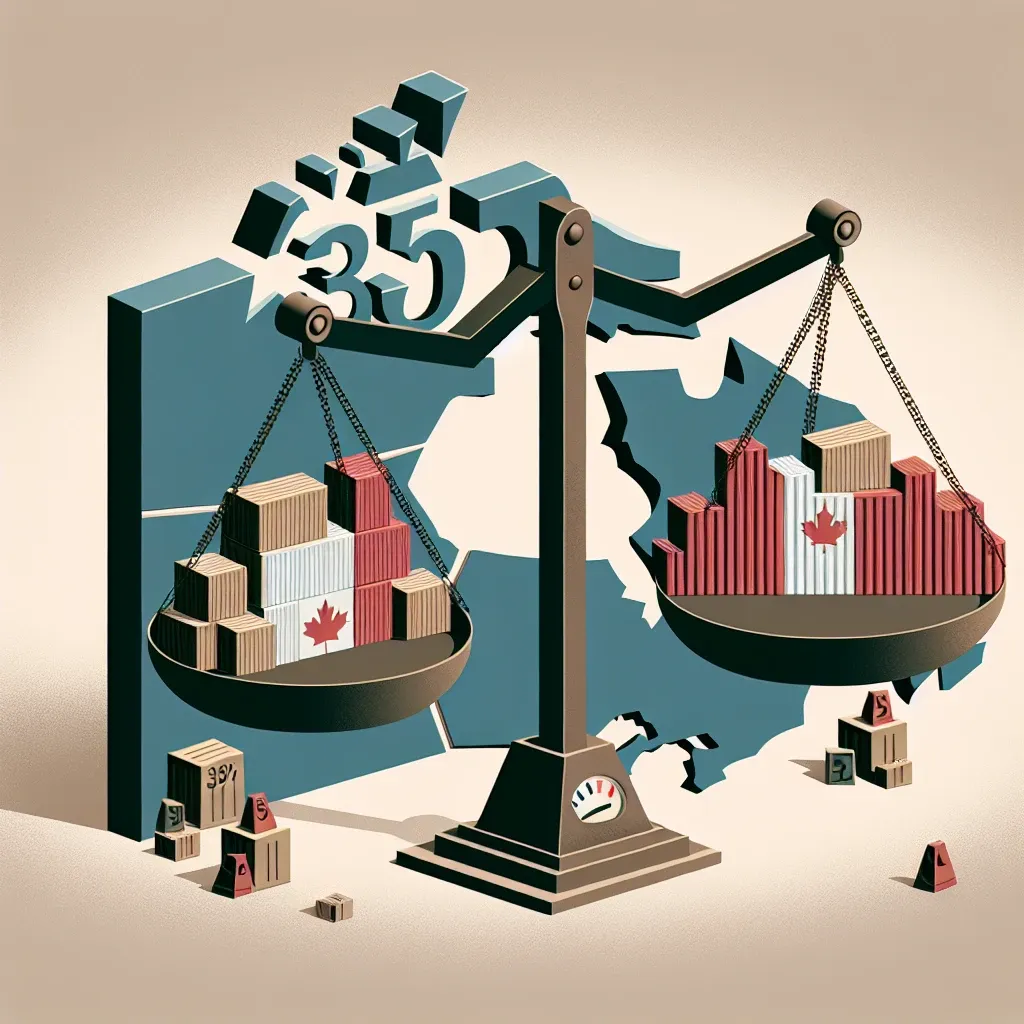Understanding the 35 Percent Tariff on Canada
The introduction of a 35 percent tariff on goods imported to Canada has reverberated through various sectors of the economy, producing both immediate and long-term implications. This article delves into the multifaceted effects of such a tariff on Canada’s economic landscape, trade practices, and consumer behavior.
Historical Context
Tariffs have long been a tool for governments to protect domestic industries. Historically, Canada has maintained a relatively open trade policy, with tariffs being utilized primarily in sectors like agriculture and manufacturing. The proposed 35 percent tariff represents a significant shift in policy, reminiscent of protectionist measures from the past.
The Global Trade Environment
In recent years, the global trade environment has been marked by escalating tensions and protectionist sentiments. Countries have increasingly turned to tariffs as a means of shielding their economies. For Canada, which relies heavily on exports to sustain its economic growth, this new tariff could pose serious challenges.
Impacts on Various Sectors
1. Manufacturing
One of the most immediate impacts of a 35 percent tariff would be felt in the manufacturing sector. Industries that rely on imported raw materials or components may face increased production costs, leading to potential price hikes for consumers. For instance, the automotive industry, which imports a significant portion of its components, could see a marked increase in vehicle prices.
2. Retail and Consumer Prices
Retailers could potentially pass on the increased costs of imported goods to consumers. Everyday items such as electronics, clothing, and home goods may see price increases, impacting the purchasing power of Canadians. This could lead to reduced consumer spending, further affecting the economy.
3. Agriculture
The agricultural sector may also be adversely affected, especially if the tariff is levied on food imports. Canadian farmers could face higher prices for imported fertilizers and equipment, which may diminish their competitiveness in both domestic and international markets.
Trade Relationships
Canada’s trading relationships could be strained as a result of the tariff. Countries that find their exports to Canada subject to these high tariffs might retaliate, leading to a cycle of trade disputes. This could impact Canada’s exports, especially in sectors like natural resources and manufactured goods that are critical to the economy.
Potential Retaliation
If other nations respond with tariffs of their own, Canadian exporters could find themselves paying the price in reduced market access and diminished sales abroad. For instance, Canadian lumber exports have previously faced tariffs in the U.S.; a 35 percent tariff could complicate these existing trade tensions.
Predictions for the Future
While the immediate effects of the tariff are clear, the long-term implications remain uncertain. Economists predict that sustained tariffs could lead to permanent shifts in consumer behavior and industry practices. For example, manufacturers might seek to source materials domestically or invest in automation to offset increased costs.
Shifts in Consumer Behavior
As consumers face higher prices, there may be a shift towards supporting local businesses. This could encourage a resurgence in Canadian manufacturing and agriculture, but it would take time for such changes to materialize.
Pros and Cons of the Tariff
- Pros: Protects domestic industries, encourages local production, and can lead to job creation in some sectors.
- Cons: Raises consumer prices, potential retaliatory tariffs from other countries, and strains international relations.
Expert Opinions
Economists and industry experts have varying opinions on the efficacy of such a tariff. Some believe that it could serve as a necessary protective measure, while others warn of the unintended consequences that could stem from such a drastic policy shift.
Personal Anecdotes
Small business owners have expressed concerns about how a 35 percent tariff might affect their operations. Many import specific goods that are essential to their services, and rising costs could mean tough decisions ahead.
Cultural Relevance
In Canada, where multiculturalism and diverse trade relationships are celebrated, a sudden shift toward protectionism may raise questions about national identity and economic philosophy. The collective Canadian attitude towards trade reflects a commitment to openness, making this tariff a contentious issue.
Conclusion
The impact of a 35 percent tariff on Canada could be profound and far-reaching. While it may protect certain domestic industries, the ripple effects on consumer prices, trade relationships, and the broader economy cannot be overlooked. Understanding these complexities is crucial for Canadians as they navigate this new economic landscape.

